Abstract
Liquid-to-gas mass transfer in anaerobic processes was investigated theoretically and experimentally. By using the classical definition of kLa, the global volumetric mass transfer coefficient, theoretical development of mass balances in such processes demonstrates that the mass transfer of highly soluble gases is not limited in the usual conditions occurring in anaerobic fermentors (low-intensity mixing). Conversely, the limitation is important for poorly soluble gases, such as methane and hydrogen. The latter could be overconcentrated to as much as 80 times the value at thermodynamic equilibrium. Such overconcentrations bring into question the biological interpretations that have been deduced solely from gaseous measurements. Experimental results obtained in three different methanogenic reactors for a wide range of conditions of mixing and gas production confirmed the general existence of low mass transfer coefficients and consequently of large overconcentrations of dissolved methane and hydrogen (up to 12 and 70 times the equilibrium values, respectively). Hydrogen mass transfer coefficients were obtained from the direct measurements of dissolved and gaseous concentrations, while carbon dioxide coefficients were calculated from gas phase composition and calculation of related dissolved concentration. Methane transfer coefficients were based on calculations from the carbon dioxide coefficients. From mass balances performed on a gas bubble during its simulated growth and ascent to the surface of the liquid, the methane and carbon dioxide contents in the gas bubble appeared to be controlled by the bubble growth process, while the bubble ascent was largely responsible for a slight enrichment in hydrogen.
Full text
PDF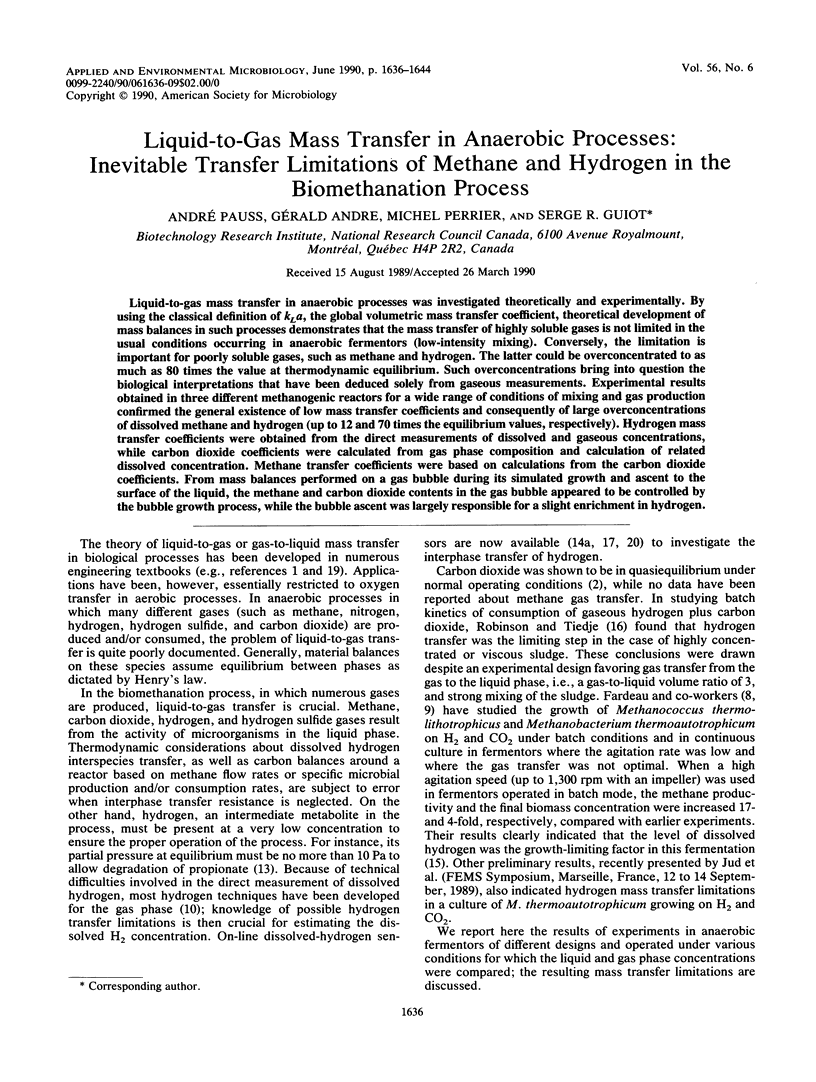
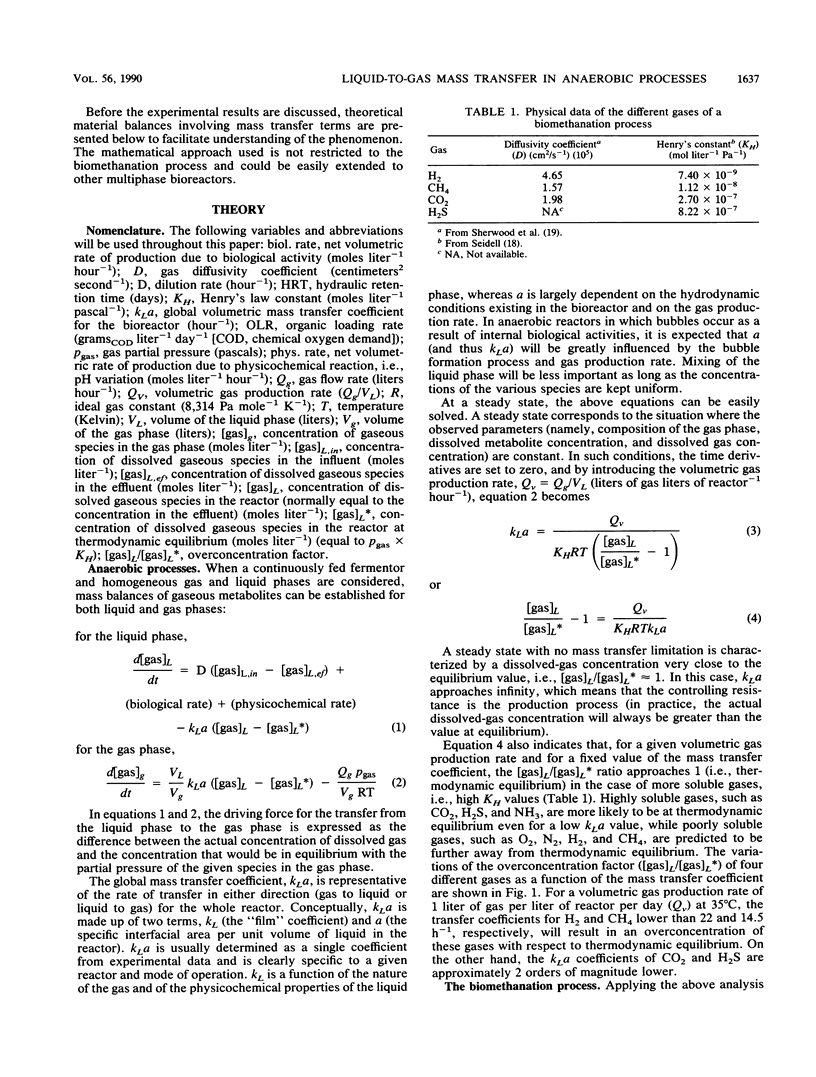
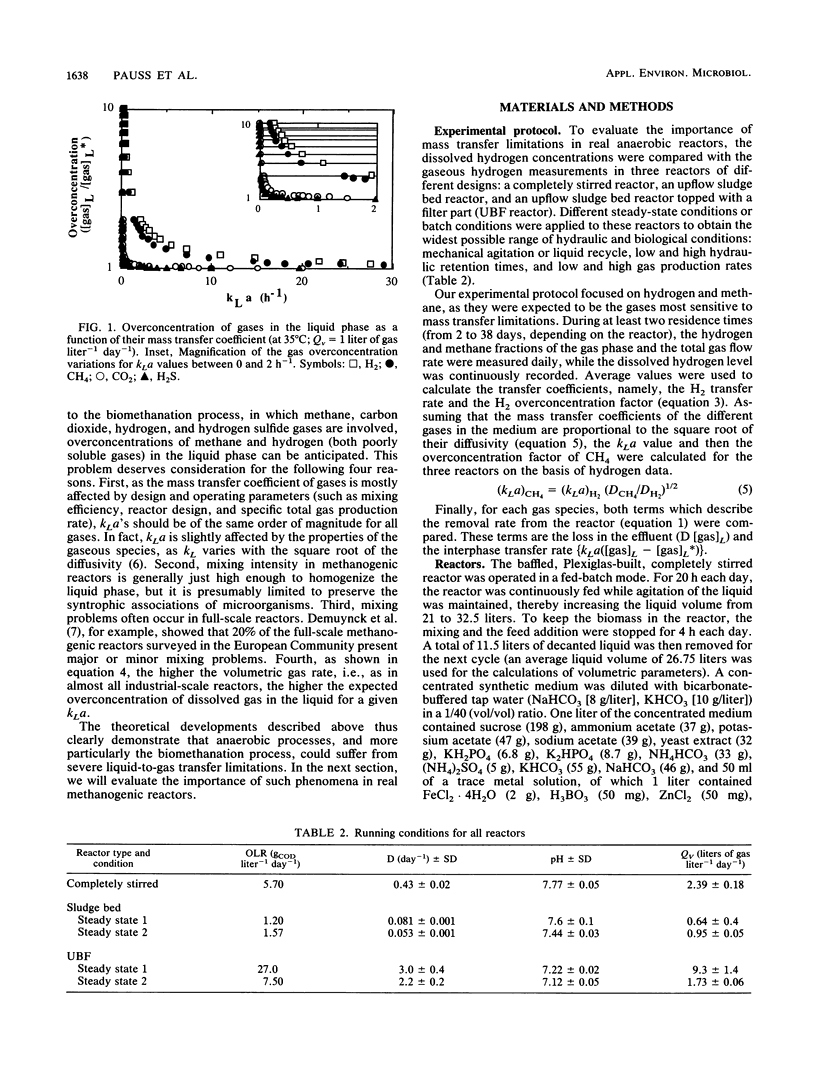
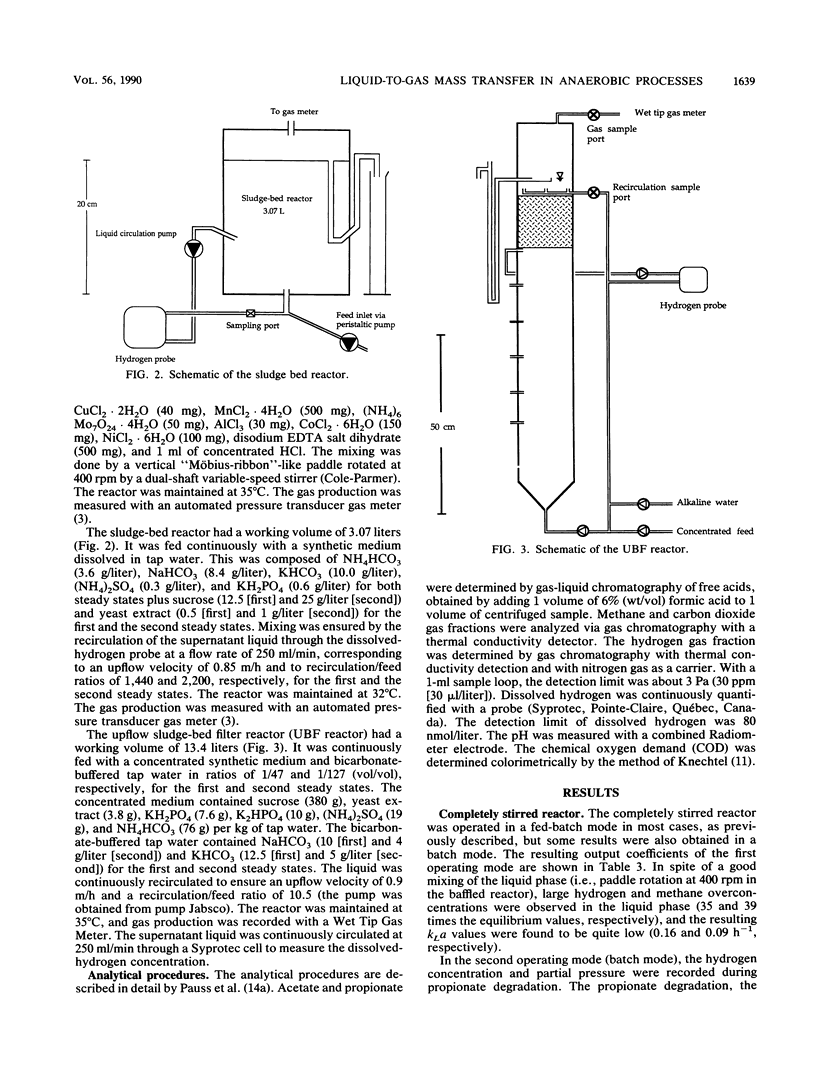
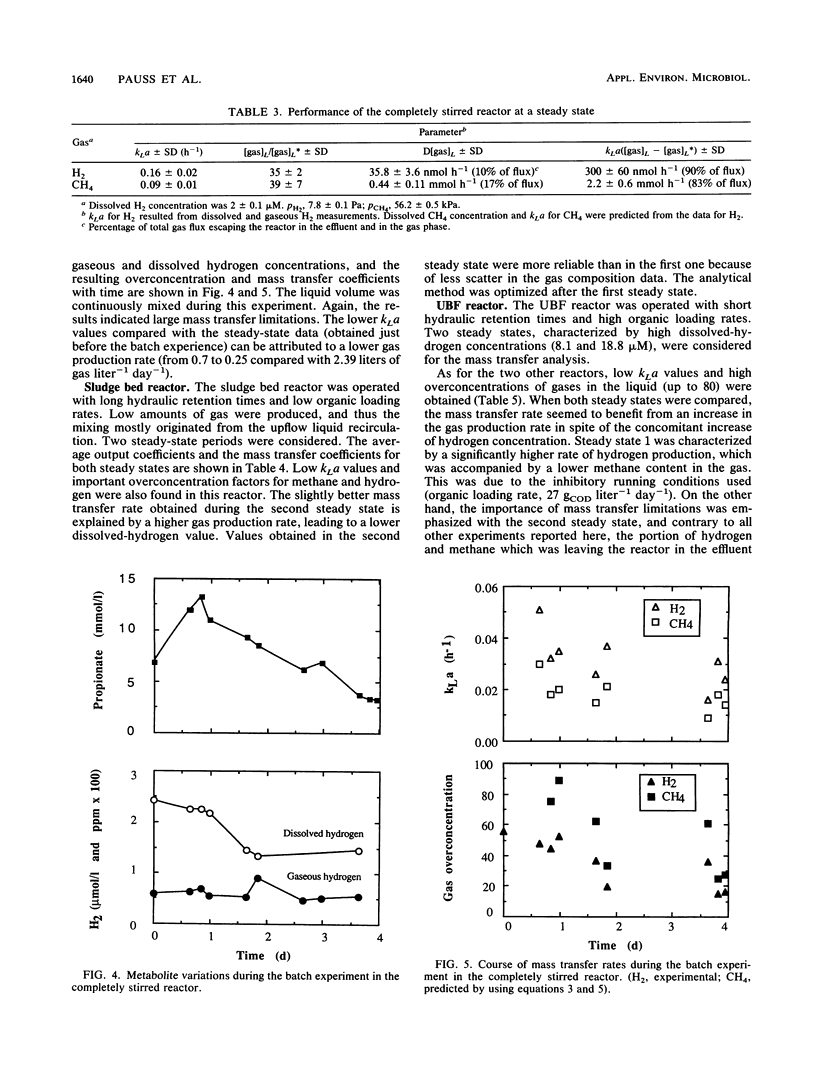
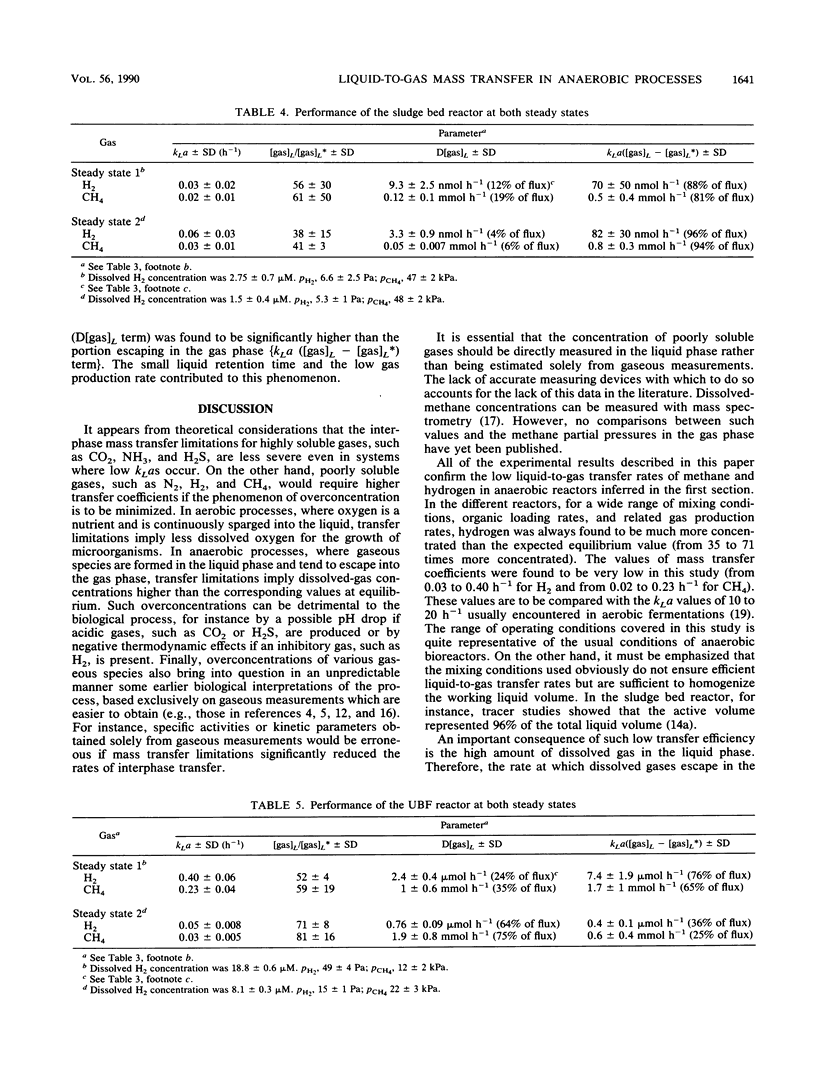
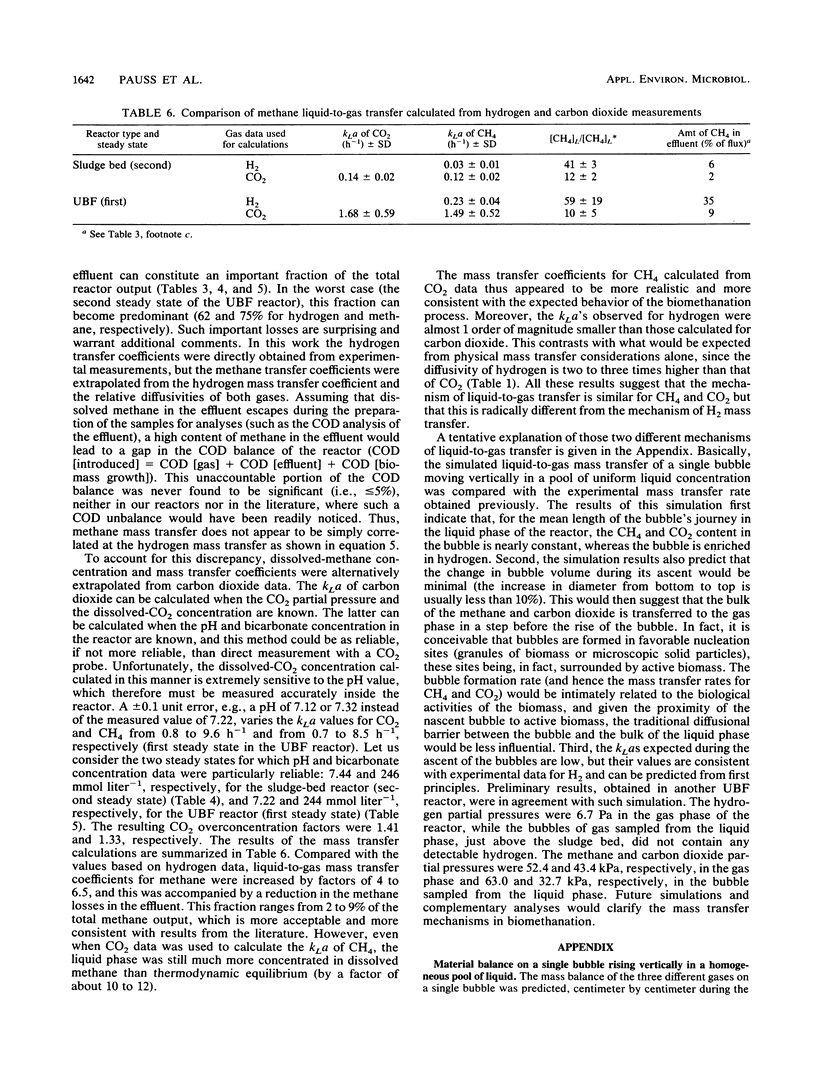
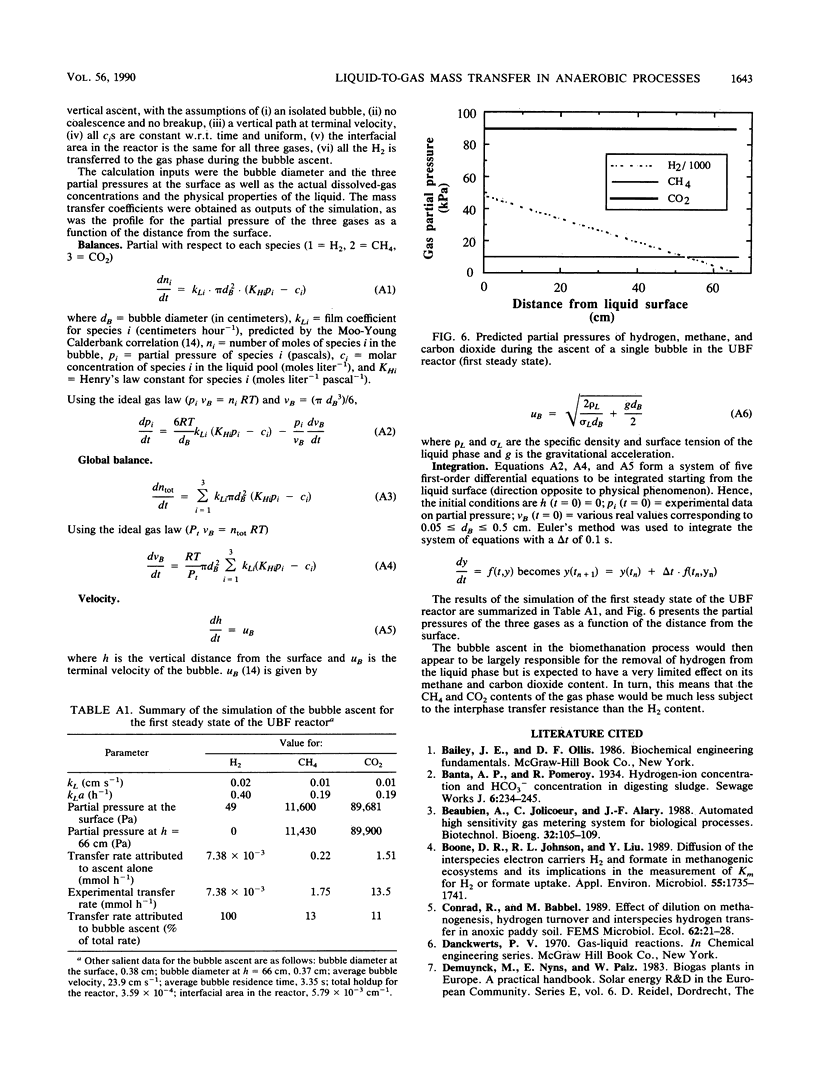

Selected References
These references are in PubMed. This may not be the complete list of references from this article.
- Boone D. R., Johnson R. L., Liu Y. Diffusion of the Interspecies Electron Carriers H(2) and Formate in Methanogenic Ecosystems and Its Implications in the Measurement of K(m) for H(2) or Formate Uptake. Appl Environ Microbiol. 1989 Jul;55(7):1735–1741. doi: 10.1128/aem.55.7.1735-1741.1989. [DOI] [PMC free article] [PubMed] [Google Scholar]
- Lee M. J., Zinder S. H. Hydrogen partial pressures in a thermophilic acetate-oxidizing methanogenic coculture. Appl Environ Microbiol. 1988 Jun;54(6):1457–1461. doi: 10.1128/aem.54.6.1457-1461.1988. [DOI] [PMC free article] [PubMed] [Google Scholar]
- Robinson J. A., Tiedje J. M. Kinetics of hydrogen consumption by rumen fluid, anaerobic digestor sludge, and sediment. Appl Environ Microbiol. 1982 Dec;44(6):1374–1384. doi: 10.1128/aem.44.6.1374-1384.1982. [DOI] [PMC free article] [PubMed] [Google Scholar]


